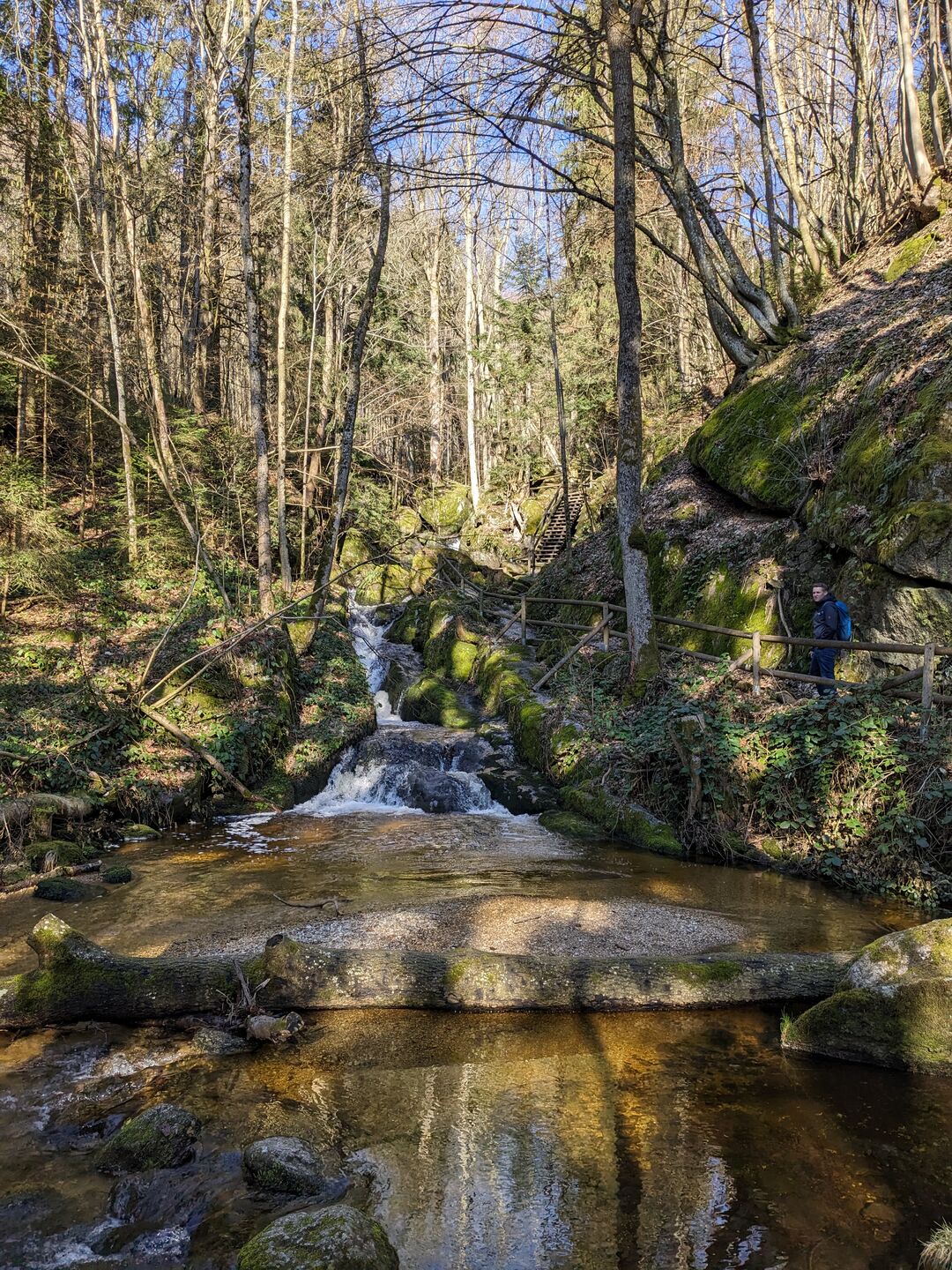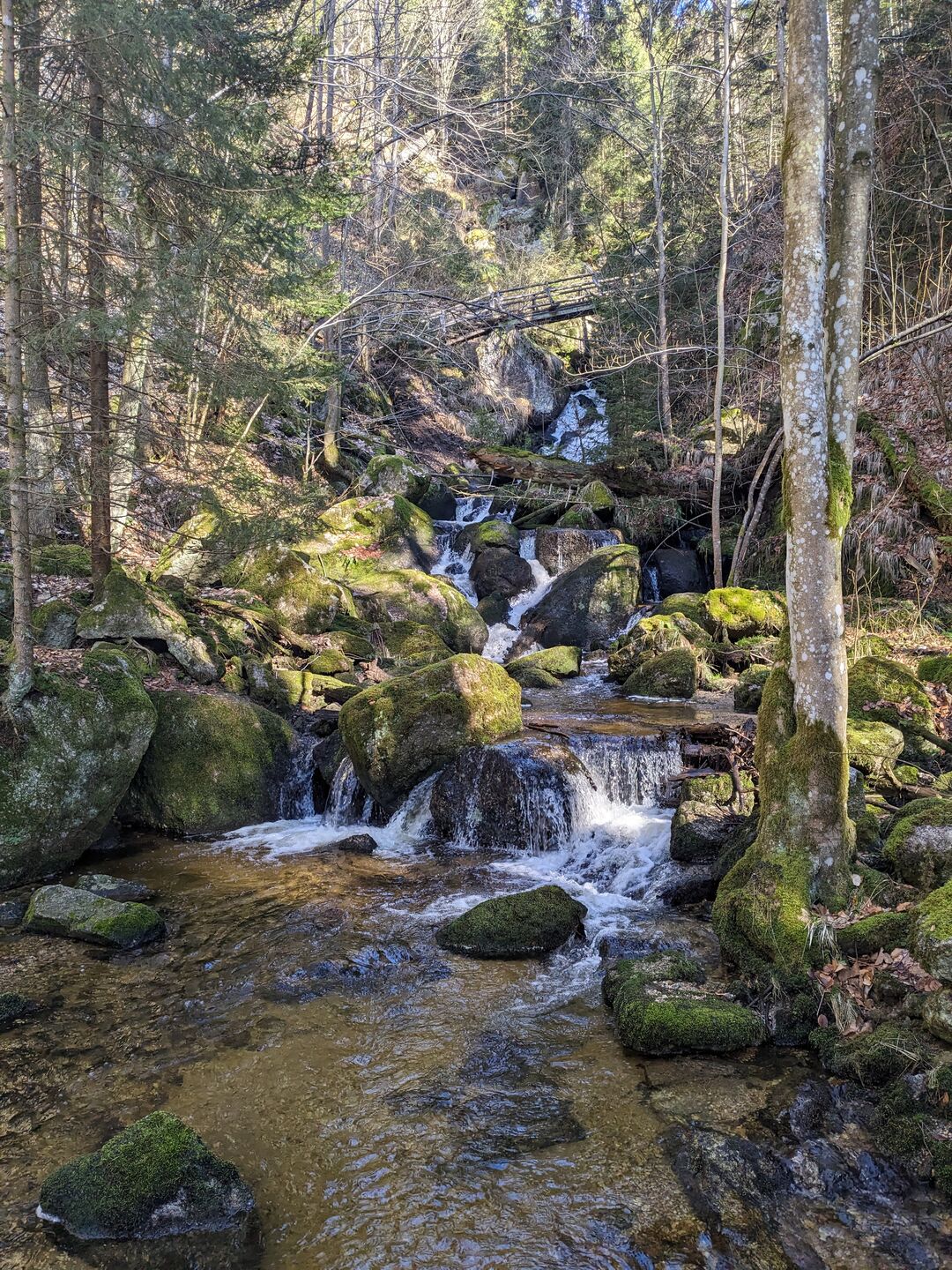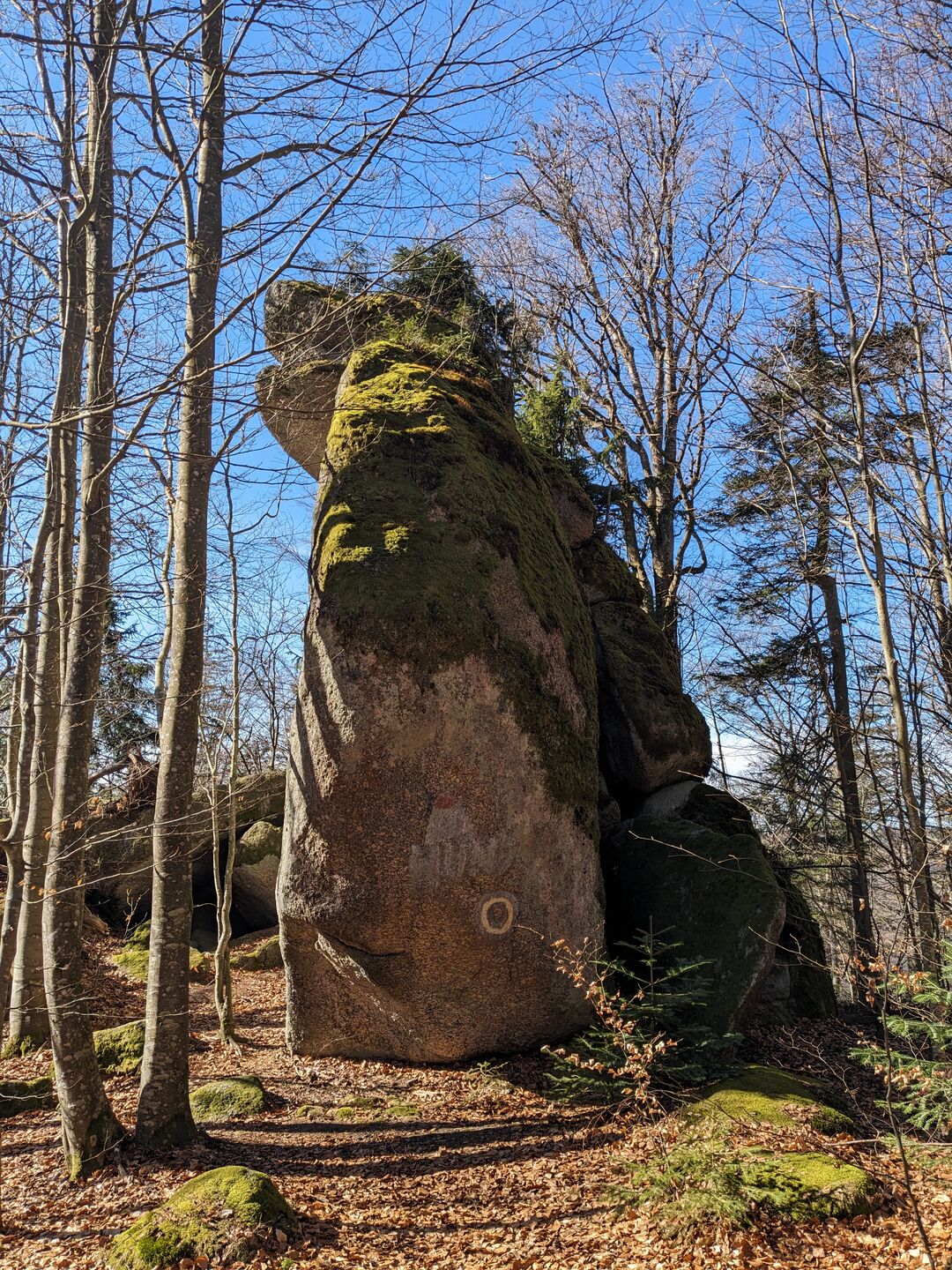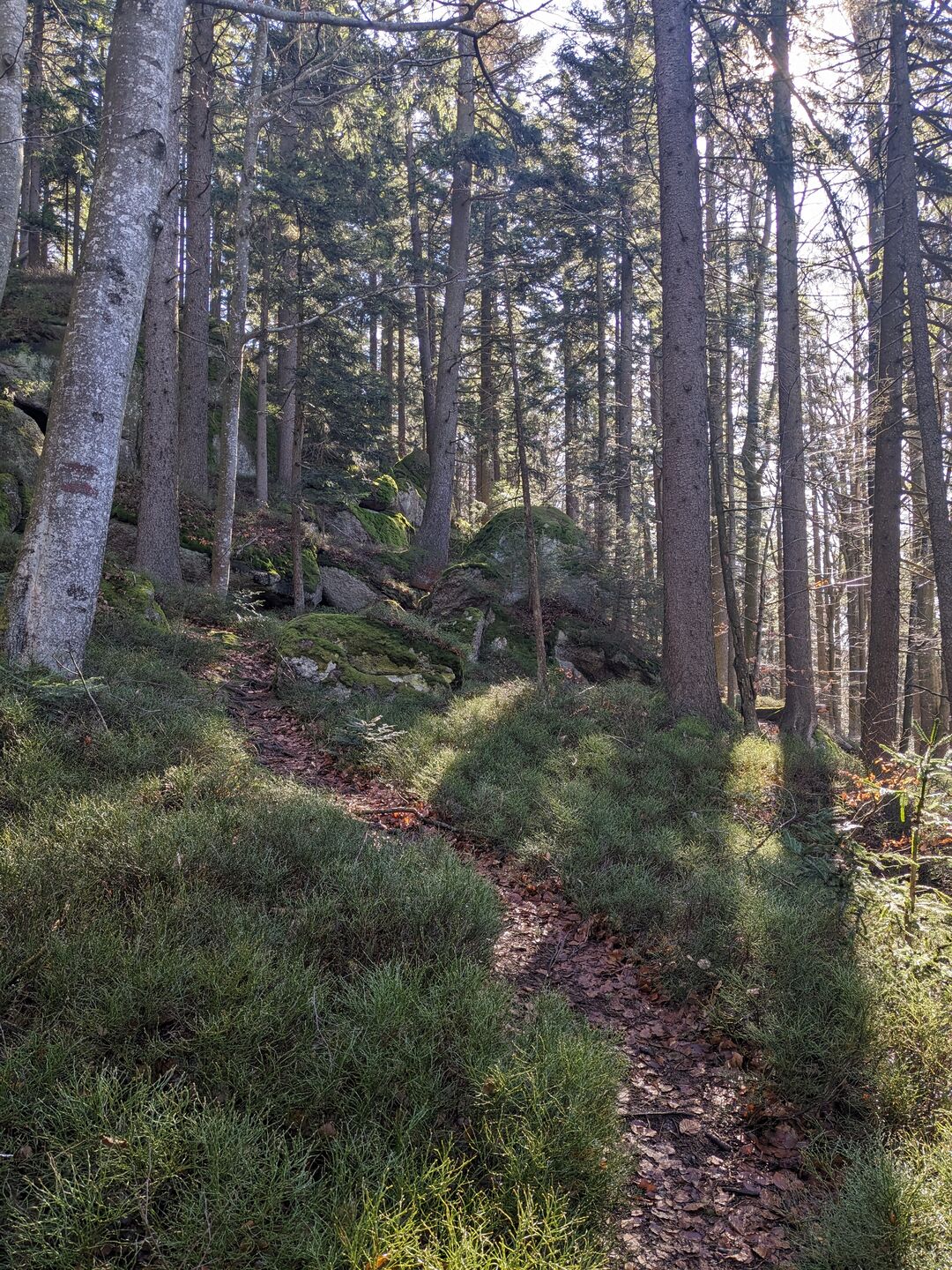A large blister forced me to take a short break from running this weekend. It was too painful to run, but fortunately I could still walk. What’s more, high fog was forecast for the morning. That’s why I thought about simply escaping a few metres higher up into the Yspertal valley. In the hope that I could catch a glimpse of a sea of fog in the Danube valley. My sister was also enthusiastic about this endeavour, so we drove to nearby Pisching near Ysper in the morning.
Geology and history
Pisching is the access point for the Ysper Gorge and the start of the Druid Trail. The area is part of the granite and gneiss highlands, an ancient mountain range that has long defied the weather and has been slowly shaped by wind and rain into a gentle hilly landscape. This has left behind mighty stones that can be found scattered across the landscape. There are many legends and myths surrounding these stones. Could they have been carried into the forests by giants?
Even the Celts were fascinated by these stones. Their druids attributed mystical powers to the stones and performed their rituals close by. A number of man-made deformations on the stones bear witness to this. Hermits also settled here time and time again. Far away from settlements, they sought solitude and spiritual enlightenment in the vast forests.
In the past centuries, the gorge itself and the Ysper river were primarily used to transport huge tree trunks. Timber was needed in abundance as building material and fuel for the expanding cities. For this purpose, the gorge was equipped with stairs, ladders and bridges in order to observe the constant flow of timber and, if necessary, to be able to quickly clear a jam.
The timber industry still plays an important role, but timber transport has been shifted to the roads. However, the infrastructure that allowed the lumberjacks to simply walk through the gorge has been preserved. This means that you can walk through the gorge all year round. A wonderful natural spectacle.
Through the Ysper gorge
There are hardly any cars at the car park this early. We are only the third to arrive. It’s still a bit chilly, but the day promises plenty of sunshine. Another hiking couple are preparing their dog, who is already wagging his tail in anticipation of his Sunday outing.
An entrance barrier marks the beginning of the gorge. In the summer months, you have to buy an entrance ticket from the nearby information stand at the car park. The tickets also have a meaningful purpose. The proceeds are used to maintain the paths through the gorge. In summer, the gorge is a popular local recreation area, but in the winter months access is free, so we can pass through.
 />
/>
 />
/>Soon after entering, our ears notice the changed soundscape. The wildly cascading water envelops the gorge in a loud roar. The water also makes the area much cooler. No wonder the gorge is very popular in Summer. The trail climbs steadily uphill over footpaths, steps and bridges. Past waterfalls and rapids. We soon get really warm, even though it’s cool, but the climb leaves us panting and our pulse racing.
We walk for almost an hour until the end of the gorge, the roar of the water subsides, and we continue our hike on a wide, slightly ascending forest path. Before that, however, we take a short break in a shelter at the end of the gorge. In the past, the water was dammed up here in a pond for the logging. However, the dam broke in the 1950s and was never repaired.
Weinsberger Forest
Our next destination is the large granite boulders that line the forest here. From now on, the path climbs less steeply up the plateau of the Weinsberger Forest. At first, the path leads along a forest road. When the dense forest thins out, there are beautiful views across the wide Yspertal valley and beyond. However, a blanket of high fog covers the Alpine foothills and only the distant Alpine mountains, such as the Ötscher, stand out from the sea of fog like rugged islands.

Magical druid stones
The first striking rock formation we see has the somewhat vulgar name Phallus and Vulva. Until late modern times, farmers are said to have brought offerings to this stone to pray for a moderate Winter. The peculiar name of the formation comes from a small opening through which you can crawl. The offerings were usually placed after this opening.
Soon after this stone formation, the path turns off the forest road onto a small forest path again. The next formation is the Sitting Dog and indeed, if you look at it from a distance, with a little imagination it resembles a sitting dog. However, it must have been a dog of giants, as the stones almost tower over the neighbouring trees.
 />
/>
 />
/>We have now reached the area that inspired the name of the trail. In addition to the sitting dog, there is a whole collection of large stone formations here: Standing Bowl, Large Bowl Stone. Celtic druids are said to have met here in a stone circle. They used this mystical place for their rituals, at least there are several traces of human carving on the stones. They are even said to have lived in a cave nearby.
Unfortunately, the following path was closed due to forestry work, so we were unable to visit the last stone formation Sphinx and had to take the wide forest road. This winter, the wind has caused a lot of damage here and uprooted many trees. Once at the bottom, we return to the car park quickly. The last kilometre is also on the road.
